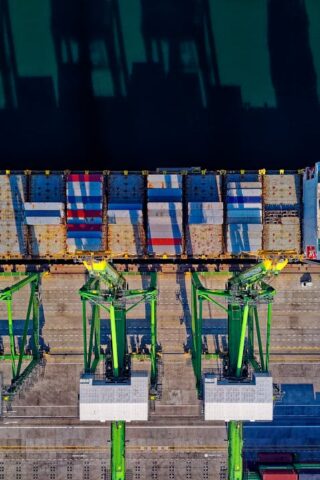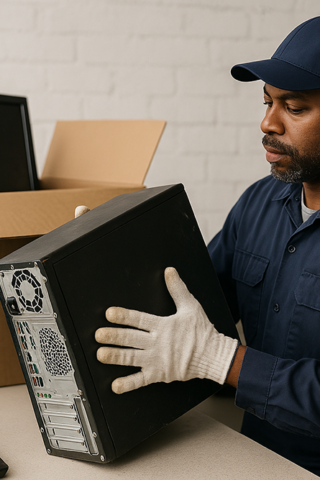Reverse logistics is the process of managing the return and disposal of products and materials, and it is a critical part of many supply chain operations. With business’ increasing focus on sustainability and circular economy, it is critical for companies to have efficient reverse logistics systems in place. One technology that has the potential to revolutionize reverse logistics is blockchain.
Blockchain is a decentralized, digital ledger that records transactions across a network of computers. Each block in the chain contains a record of multiple transactions, and once a block is added to the chain it cannot be altered. This allows blockchain technology to create a secure and transparent record of transactions without the need for central authority. In the context of reverse logistics, blockchain technology can be used to track the movement of returned products and materials, enabling companies to better manage their returns and disposal processes. However, blockchains can be used for many other applications, such as tracking supply chain management, land registry, and voting systems.
In this analysis, we will explore the potential for blockchain to be applied to reverse logistics operations, examining the benefits and challenges of using this technology in this context. We will also look at some of the key considerations for companies seeking to adopt blockchain for their reverse logistics systems.
Blockchain Applications to the World of Reverse Logistics
Blockchain technology has the potential to improve reverse logistics in several ways:
- Improved traceability: Blockchain technology allows for the creation of a digital record of the history of a product, including its movement through the supply chain. This can make it easier to track the movement of a product through the reverse logistics process and identify any bottlenecks or inefficiencies.
- Enhanced transparency: Blockchain technology allows for the creation of a transparent, decentralized record of transactions, which can make it easier to track the movement of products through the reverse logisticsprocess and identify any fraudulent or illicit activity.
- Increased efficiency: By automating certain aspects of the reverse logistics process using smart contracts, blockchain technology has the potential to reduce the time and cost of managing returns and processing warranties.
- Improved asset utilization: By enabling the reuse of returned products, blockchain technology can help businesses reduce waste and improve asset utilization.
Overall, the use of blockchain technology in reverse logistics has the potential to improve the efficiency and transparency of the process, which could lead to cost savings for businesses and a more sustainable supply chain.
Traceability is also important in the reverse logistics process to identify areas of improvement and to prove historical data. Blockchain technology can also improve traceability in the reverse logistics process:
- Tracking returns: When a product is returned, it can be difficult to determine its history and whether it is fit for resale or reuse. By creating a digital record of the product’s movement through the supply chain, blockchain technology can help businesses track the history of a returned product and determine its condition.
- Identifying bottlenecks: By tracking the movement of returned products through the reverse logistics process, businesses can identify bottlenecks or inefficiencies in the process. For example, if a high percentage of returned products are being held up at a particular stage in the process, this could indicate a problem that needs to be addressed.
- Improving warranty processing: When a product is returned for repair or replacement under warranty, it can be difficult to determine the history of the product and whether it is covered under the warranty. By creating a digital record of the product’s movement through the supply chain, blockchain technology can help businesses verify the warranty status of a returned product more quickly and efficiently.
The integration of blockchain technology could be the key to advancing reverse logistics in the future. There are several key considerations that companies should keep in mind when exploring the use of blockchain technology for reverse logistics:
- Integration with existing systems: It is important to consider how the blockchain system will integrate with a company’s existing systems and processes. This may involve adapting current systems or developing new ones.
- Data privacy: Companies should carefully consider how they will handle data privacy in their blockchain system. This may mean implementing secure protocols for handling sensitive data and ensuring that only authorized parties have access to it.
- Scalability: The blockchain system should be able to scale to meet the needs of the company as it grows.
- Cost: Companies should consider the cost of implementing and maintaining a blockchain system, as well as any potential cost savings that it may bring.
- Regulation: It is important to consider any relevant regulations that may impact the use of blockchain in reverse logistics, such as data privacy laws.
- Collaboration: In many cases, the success of a blockchain system in reverse logistics will depend on the ability of multiple parties to collaborate and work together. Companies should consider how they will facilitate and encourage this collaboration.
Overall, the use of blockchain technology in reverse logistics can help businesses improve traceability by creating a digital record of the movement of products through the process, which can help them identify problems and inefficiencies and make more informed decisions about how to handle returned products.








